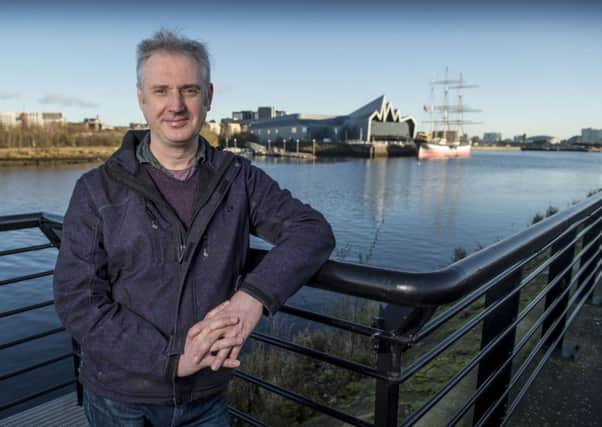Inspiring stones have stories to tell at St Magnus Festival


Yes, but according to Paul MacAlindin, founder and conductor of the Govan Barons Orchestra, a professional freelance orchestra working at the heart of the former shipbuilding community, and which heads to Kirkwall’s St Magnus Cathedral later this month to perform Alasdair Nicolson’s Govan Stones, it’s the commonality of these relics and their symbolism that will define the magic of this music.
“I knew that Alasdair, who is also the festival’s director, was interested in the relationship between music and stones in Orkney, so to ask him to write a piece inspired by the Govan stones seemed to me a natural connection with St Magnus,” he says.
Advertisement
Hide AdAdvertisement
Hide AdThe result is a three-movement concerto, written especially for Tom Poulson, a Scots-trained trumpeter admired by Nicolson, which draws on the mystical forms and images the composer observed when MacAlindin invited him to Govan to see the Clydeside town’s unique assortment of medieval Celtic, early Christian and Viking stones that originate from the 9th to 12th centuries.
“They lie now on permanent display in Govan Old Parish Church, which sits on the site of the first ever mainland church in Scotland back in the 6th century,” says MacAlindin. “It was the seat of Christianity until Glasgow Cathedral was established in the 12th century. It was a hugely important centre.”
“The stones all have a story to tell,” explains Nicolson, who found himself fascinated by the raw images etched into this extraordinary collection of 10th century Viking hogbacks [grave markers modelled on the occupants’ traditional Viking long houses] and the 6th century stone sarcophagus of St Constantine, but more especially the uniquely patterned knotwork common to so many of the stones.
“There’s a Govan school of early Christian knotwork, and it’s all over these stones,” says MacAlindin. And that’s what gave Nicolson his starting point. “It is such a powerful decorative backdrop to the stones, that I felt compelled to translate it into a musical backdrop for the concerto. So there’s a lot of intricate counterpoint, intertwining lines that continually chase their tails.”
Against that permeating background, each of the work’s sections have a specific story to tell, though the opening movement – Entwined – is dominated by the elusive images of the knotwork itself. Govan’s gigantic Sun Stone – serpents radiating from a central orb in a manner representative of that grey area between pagan and Christian symbolism – is the subject of the second movement. The boisterous finale, The Royal Huntsman (and the Cuddy), takes its inspiration from the pictographic hunting scenes on Constantine’s sarcophagus.
“These are not the Elgin Marbles; they’re quite rough and in your face,” says MacAlinden. “For a composer as sophisticated as Alasdair I love the fact these stones have allowed him to take his writing in a more rough and ready direction, to have a sense of humour, to allude to the charm and faux-naiveté of the images.”
As for Nicolson, it was the resonance with Orkney that excited him about this project. “We have hogbacks, too. They’re common across the Viking world.” And nowhere quite captures that cross-contamination of cultures and rituals like the rugged austerity of St Magnus Cathedral. MacAlindin will conduct a Govan premiere of the work in Govan Old Parish Church on 20 June, prior to its St Magnus performance.
Advertisement
Hide AdAdvertisement
Hide AdAs for the rest of this 43rd St Magnus Festival, an obvious point of commemoration has been the centenary, on 21 June, of the scuttling of the German Fleet at Scapa Flow in 1919. “This year’s Johnsmas Foy, The Day The Fleet Went Down, does just that,” says Nicolson. “But otherwise we’ve gone for a theme more focused on peace and reconciliation.”
Thus a high-profile lecture by Terry Waite, and a music programme that finds the BBC SSO performing music by Rudi Stephan, a promising German composer who died in 1915, and Elgar’s great Cello Concerto, composed 100 years ago in the aftermath of the First World War.
As always with St Magnus, local talent mingles with visiting artists. So on the one hand there’s the world premiere of local musician Eric Linklater’s conceptual music and theatre piece, Writer’s Block, involving musicians from Orkney’s Assembly Project, while on the other, guest performers include four visiting Nordic choirs, the Scots-based Maxwell Quartet and a host of classical soloists including Ukrainian pianist Dinara Klinton and Polish pianist Anna Szalucka. n
The St Magnus Festival is at various venues throughout Orkney from 21-27 June, www.stmagnusfestival.com